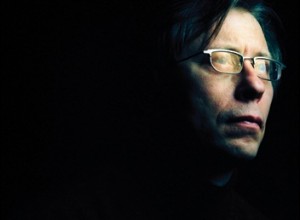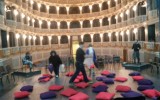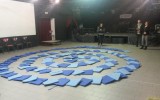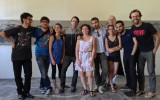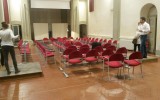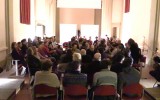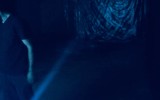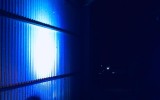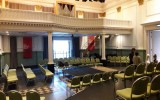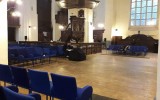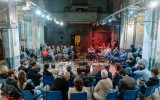IN THE DARK
Next Concert:
String Quartet n. 9 //
PREVIOUS CONCERTS
- Kaivos festival // 11th September 2020 Outokumpu (Finland)
- Nuova Musica // 21th October 2020 h 21:00, Teatro Lauro Rossi, Macerata (Italy)
- music@villaromana // 13th September 2019 20:00, Villa Romana, Firenze (Italy)
- Musica in Prossimità // 20th September 2019 h 19:30, Teatro Del Lavoro, Pinerolo (Italy)
- Sound of Music // 7th November 2019 h 20:00, Groningen, (Holland)
- November Music // 8th November, 2019 h 15:00, 's-Hertogenbosch, (Holland)
----------------------------
String Quartet n. 3 // listen
FUTURE CONCERT
- Teatri del suono / ON THE EDGE // 17th February 2023 h 18,30, Magazzino 26 / Sala Luttazzi, Porto Vecchio , Trieste
PREVIOUS CONCERTS
SOUND SPACES 2023 // 19th December 2023, Malmö ( Sweden)
Distat Terra Festival // 21st December 2018 h 22:00, Choele Choel (Argentina)
- La Via Lattea 15 // 30th September 2018 h 17:30, Mendrisio, Teatro dell'Architettura (Switzerland)
- Il Borgo Risuona // 16th June 2018 h 21:30, Chiesa di San Vito, Piossasco (Italy)
- Tzlil Meudcan Festival // 12th July 2016 h 20:00, Tel Aviv (Israel)
- Johns Hopkins University of Baltimora // 27th March 2015 h 21:45, SDS Room - Mattin Center, Homewood Campus, Baltimora (USA)
- Dialoghi sul comporre // 3rd Jenuary 2015 h 21:30, Budrio, Bologna (Italy)
- Rassegna "In prossimità" // 5th Dicember 2014 h 21:00, Pinerolo, Teatro del Lavoro (Italy)
- Rassegna di Nuova Musica // 6th April 2014 h 21:00, Macerata (Italy)
- Bloom // 3rd April 2014 h 21:00, Mezzago (Italy)
- Villa Romana // June 2013 h 21:00, Firenze (Italy)
Quartetto n. 3 “In iij. Noct”
In his third string quartet (“In iij Noct.“), Georg Friedrich Haas continues his experiments with the possibilities of music performed in the dark, as established in Adolf Wölfli and in vain. Darkness, however, is not present in this piece merely as an absence of light, but becomes the key theme of the work: the whole piece is played in complete darkness, the musicians can see neither their music nor their fellow performers, and are seated as far apart from one another as possible – for example they might be seated around the audience in the four corners of the auditorium. Towards the end of the 3rd String Quartet a quotation from Gesualdo can be heard, from which the work also takes its title (from the Responses: Feria V, Resp. VII). The 3rd String Quartet is composed as a verbal score, with many details and decisions left to the performers. They communicate solely through the sounds produced by their instruments, inviting one another into musical processes, accepting these invitations or responding in kind with an invitation of their own – and always deciding for themselves how far they choose to go down each path together, before turning back. The duration of the piece is only decided during the performance: the minimum length is 35 minutes, but the piece can also last considerably longer.
// from the "Darkness Audible" by Alex Ross //
The New Yorker, Nov. 29, 2010.
… The work is subtitled In iij. Noct., a reference to the Third Nocturn of the old Roman Catholic Tenebrae service for Holy Week, which marked Christ’s sufferings and death with the gradual extinguishing of candles. Haas, who grew up in Tschagguns, a Catholic village in the Austrian Alps, asks for total darkness during performances of his quartet, the score specifying that even emergency lights should be covered.
When the blackout began, I initially felt a fear such as I’ve never experienced in a concert hall: it was like being sealed in a tomb. No wonder the members of the quartet usually try out a brief spell of darkness with each audience, to see if anyone exhibits signs of distress. (Indeed, one young man sheepishly got up and left.) Yet the fear subsides when the music begins. The performers, who are positioned in the corners of the room, seem to map the space with tones, like bats using echolocation to navigate a lightless cave. They have memorized the score in advance, and it is an unusual document: Haas sets out eighteen musical “situations”—with detailed instructions for improvising on pre-set motifs, chords, and string textures—and a corresponding series of “invitations,” whereby the players signal one another that they are ready to proceed from one passage to the next.
Often, the music borders on noise: the strings emit creaks and groans, clickety swarms of pizzicato, shrill high notes, moaning glissandos. At other times, it attains an otherworldly beauty, as the players spin out glowing overtone harmonies. Toward the end comes a string-quartet arrangement of one of Carlo Gesualdo’s Responsories for the Tenebrae service (“I was like an innocent lamb led to the slaughter . . .”). That music is four hundred years old, and yet, with its disjointed tonal language, it sounded no less strange than the contemporary score that surrounded it. Weirdness is in the ear of the beholder.
In the past decade, Haas, who is now fifty-seven and living in Basel, Switzerland, has emerged as one of the major European composers of his generation. He is allied with the French spectralist school, which draws musical material from a close analysis of overtones and other properties of sound. Haas also esteems various American experimental composers, particularly those who are concerned with microtonality, the division of the octave into more than the usual twelve pitches. In this way, he bridges a gap between American and European musical communities that historically have had little to say to each other. What sets him apart from many of his European contemporaries is that he is not afraid of theatrical gestures, opulent expanses of sound, landscapes on an almost Wagnerian scale. Not for him the studiously fragmented modernist discourse that Ligeti once defined as “event—pause—event.” He is an esoteric Romantic, dwelling on the majesty and terror of the sublime.
press:
